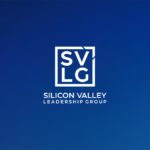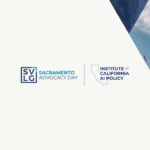With basic needs still unmet for many native communities, access to clean water and electricity are top of mind for Bidtah Becker, CalEPA Deputy Secretary for Environmental Justice, Tribal Affairs and Border Relations.
Recently nominated for the position, Becker sat down with SVLG’s Vice President of Environmental Policy, Mary Holing, sharing insights about the CalEPA’s environmental justice goals on energy and climate policy. In one of her first appearances since stepping into the role, she candidly discussed key issues that impact Native American tribes in California including safe drinking water, access to the power grid, land management, language preservation, education and air quality.
Becker fielded questions from SVLG members representing educational institutions, the solar industry, and more, elucidating native communities’ needs and highlighting opportunities for collaboration. As she tackled each issue, Becker emphasized the uniqueness of each tribe.
“When you know one tribe, you know one tribe—each tribe has different goals and priorities,” she said. “Don’t be afraid to just contact the tribal folks and find out what’s happening.”
Land issues continue to be a concern for native communities, with a movement for co-management of lands regaining steam. Giving the state water project as an example, she noted the complicated past with land possession.
“Some tribes may be looking to the past to remedy past issues; some tribes may be looking to the future in their communities,” she said.
Additionally, the loss of native languages and cultures remains a concern. As languages become isolated, with fewer and fewer speakers, revitalization and preservation become more important. To illustrate this issue, Becker drew a line between the community memory of language and the institutional memory of organizations.
Opportunities for collaboration with local colleges and universities on the local level abound, she noted. Addressing how universities can work with native communities, she emphasized “capacity building,” or the ability of education to help tribal communities build themselves from within.
“I think in an ideal world, it’s local universities working with their local tribes to figure out what their capacity development looks like,” she said. “And when we talk about capacity development, it’s not just hard skills like science or engineering, but it’s also building governments, building good financial institutions.”
In response to a question from a solar provider on how to ensure green technology reaches historically marginalized communities Becker acknowledged the challenges and opportunities, recalling her time at the Navajo Nation, where an estimated 14,000 homes are not connected to the electric grid. She focused on the need to both connect homes to the grid and use off-grid solar programs. In her experience, the problem became maintenance, where when the systems stopped working, they were discarded instead of repaired.
With the conversation turning to autonomous and electric vehicles, Becker noted that she sees an opportunity for native communities to benefit from zero emission vehicles, particularly when it comes to idling trucks at the border.
Clean, safe drinking water is also a major concern for tribal communities, Becker said.
“That was another big reason I came to California—flipping the dialogue from, you know, 99% of our people have clean drinking water,” she said. “Well, let’s focus on the 1% that doesn’t.”
After 20 years of working with native communities, Becker is optimistic about the future and sees an opportunity for those in business and public policy to take an advocacy role.
“Sometimes your voices are louder than the people in the community,” she said. “I was in the tribal community, kind of always hoping people heard our voices. People are starting to hear the voice, and it’s a pretty exciting time.”
###



